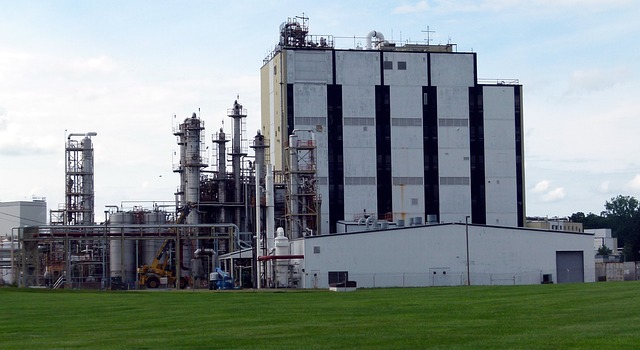The global barium sulfate market has undergone significant changes in recent years. China plays a pivotal role in both production and consumption. This article delves into the intricate details of barium sulfate production, consumption patterns, and market prices. It also sheds light on the dynamics shaping this important industry.
Our world grapples with unprecedented climate challenges. Industries are looking for innovative solutions to enhance insulation, waterproofing, and other applications. Barium sulfate becomes a key player in these areas. It occupies a place in coatings, plastics, inks, paper, rubber, and other fields. Understanding global market and pricing dynamics is critical to understanding the development trajectory of this versatile compound.
1. Production and Consumption Insights
1.1 Global Barium Sulfate Market Overview
In 2021, the global barium sulfate market size will reach an astonishing RMB 24.38 billion. China’s contribution is significant. The market size reaches RMB 6.99 billion. Forecasts show that the global market may surge to 32.96 billion yuan by 2027. The compound annual growth rate from 2021 to 2027 is expected to be 4.17%.
1.2 2021 Insights into China’s Barium Sulfate Production
Breaking down the numbers for natural barium sulfate (heavy spar) in China for 2021 reveals a production volume of 2,800 kilotons, marking a 12% YoY increase. But, demand has seen a 6.6% decline, reaching 1,911.1 kilotons.
About natural barium sulfate, I have written an article with the title Unveiling the Differences: Natural Barium Sulfate vs. Precipitated Barium Sulfate. Please check it here.
China’s export and import landscape for natural barium sulfate saw fluctuations. Exports of natural barium sulfate (heavy spar) surged by 70.7% to 923,796.7 tons, while imports plummeted by 60% to 34,951.73 tons. The import and export values experienced respective declines of 53.4% and growth of 59%.
1.3 2021 Data on China’s Barium Sulfate
In 2021, China’s barium sulfate export quantity increased by 3.7%, reaching 120,217 tons. Whereas imports saw a substantial 35.7% uptick, totaling 7,855 tons. The corresponding import and export values surged by 29.8% and 26.9%, respectively.
Germany’s imports are noteworthy (3,821,387 kg). The United States leads in exports (42,302,972 kg).

1.4 Key Consumption Patterns of Barium Sulfate
Internationally, the barium sulfate market is dominated by major companies such as Germany’s Sachtleben and Japan’s Sakai Chemical. Production capacity hovers around 100,000 tons. This compound is widely used in various industries. Among them, coatings account for 70-80%, plastics account for 20-30%, inks and pigments account for 3%, paper accounts for 1%, and rubber accounts for 1%.
China’s coatings industry is developing rapidly. Main business revenue is expected to increase by 16% year-on-year to 460 billion yuan in 2021. Barium sulfate demand is expected to rise, accounting for 5-20% of the mass of coating ingredients.
Note: If there is any discrepancy with the above data, please contact me at info@globalpolyester.com.
2. Pricing Dynamics in the Barium Sulfate Market
In the past few years, the market price of precipitated barium sulfate in China has remained relatively stable. In particular, the market price of barium sulfate precipitated by nitric acid method remains basically unchanged. Coordination among industry manufacturers and China’s resource-rich regions contributes to this stability. The current price of barium sulfate produced by nitric acid method is between 2,600-3,500 yuan.
On the other hand, sulfate process products are priced between 3,500 yuan and 4,000 yuan. High-end modified products can cost 8,000 yuan to 12,000 yuan. The sulfate process has overcapacity and product homogeneity. This, coupled with a lack of innovation, results in profitability challenges.
Imported barium sulfate maintained a stable bottom line. The price of German Sachtleben micro series products is around 15,000-17,000 yuan. Market volatility is smaller. Italian Soave products sell for 8,000-10,000 yuan. Japan’s Sakai Chemical B-30 series products are priced at 15,000-20,000 yuan. Other companies sell for 20,000-30,000 yuan.
So, the global barium sulfate market is at a crossroads of growth and challenges. Although China remains a major player in production and consumption. However, market participants must contend with price volatility and address overcapacity and homogeneity. The industry will continue to innovate and adapt. Barium sulfate’s role in a variety of applications ensures its lasting influence on the global stage.
3. Unveiling Trends in the Barium Sulfate Precipitation Industry
The landscape of the barium sulfate precipitation industry is complex. Domestic and international players are navigating complex trends shaping their trajectories. The following content analyzes the development trends globally and in China. It sheds light on the challenges and opportunities facing this important industry.
3.1 Trends in the Development of International Companies
International manufacturers, many of them are centuries old. They are technology and quality leaders on the global stage. They have strong strength, but the industry remains a relatively small one. Recognizing this, they turned to strategic cooperation with Chinese domestic companies. These companies have commendable technical and quality management capabilities.
Interestingly, the technical capabilities of China’s domestic barium sulfate companies are constantly improving. The market share of international companies is shrinking. The future strategy of these global giants may be to acquire manufacturing plants in China. They screen those with strong strengths for merging. It aims to expand its market dominance. It also gains a considerable share in the high-end market.

3.2 Emerging Trends in China’s Industry
Domestic production mainly relies on low-content barite and coal as raw materials. However, this manufacturing process generates particles, emissions, wastewater, and residues. Thereby it causes environmental pollution. Affected by the national “13th Five-Year Plan”, environmental governance has been intensified. The challenges faced by business operations are increasing.
At the same time, China continues to import high-quality barium sulfate from overseas. The price gap is huge – import costs are 5 to 10 times higher than domestic exports. To address these challenges and promote sustainable growth, the development trend of China’s barium sulfate industry is reflected in several aspects.
3.2.1 Strengthening Environmental Management for Cost Efficiency
Many strategies are implemented to mitigate the impact on the environment. Strategies include using coal-water slurry instead of pulverized coal combustion to optimize combustion efficiency. Flash evaporation technology reduces process complexity and minimizes dust contamination. In addition, recycling high-temperature flue gas waste heat and using double-layer refractory bricks in the furnace also help save energy. Use multi-effect evaporation and heat pump technology to reduce steam consumption. It realizes the secondary recovery of barium salt in waste residue. So they can be converted into building materials to ensure resource efficiency.
3.2.2 Researching Fundamental Performance Indicators for Quality Improvement
Most domestic barium sulfate companies regard it as a crude chemical. So it lacks refined management and in-depth research on basic performance indicators. Common quality issues such as sulfides, whiteness, particle size distribution, dispersion, and impurity spots remain unresolved. Development strategies should include refined management practices. It is also useful to dive into these metrics to improve product quality.
3.2.3 Product Diversification for Market Expansion
China’s traditional market for barium sulfate is concentrated in powder coatings, anti-corrosion coatings, modified plastics, and other fields. But, barium sulfate’s versatility suggests it has a wider range of applications. It can also carry out different modified coatings to expand different applications.
Used for PCB ink, it requires small particle size and inorganic silicon-aluminum modification. At the same time, it also requires stable color, high oil absorption, and good dispersion. The scraper fineness is about 10μm.
Used for ink paste, the particle size is required to reach the nanometer level. Stable color, high oil absorption, and good dispersion are also required. The grinding fineness is about 2μm. It improves the color rendering and thixotropy of the product.

When used in the light diffusion industry, it is required that the particle size should not be too small. The average particle size is between 3-10μm. Because the particles are too small, light will be transmitted easily. The light scattering effect will not be achieved;
Used for rubber and other composite materials, it requires good dispersion properties. At the same time, if the particle size is smaller, its reinforcing effect will be greater. These features play a role in wear resistance and other functions.
I have written an article to introduce performance metrics and characteristics of precipitated barium sulfate in paints and coatings, please check it here.
Products are customized to meet the specific requirements of different industries. The key is to align product quality with market demand. And it actively develops new products to stay competitive.
3.2.4 Advancing Industrial Production of Nano Barium Sulfate
Nano barium sulfate has the characteristics of small particle size and narrow distribution. Its demand has exceeded current industrial production capacity. Foreign players, such as the BF20 series of Japan’s Sakai Chemical, have set a benchmark in this field. Scaling up sub-30nm production remains largely experimental in China. The global chemical materials market has many tasks. But meeting the growing demand for nano barium sulfate is a top priority.
4. Conclusion: Navigating the Future of China’s Barium Sulfate Industry
China is rich in barite mineral resources. It has unique advantages in the production of barium sulfate. The country’s vast downstream applications further enhance its strategic position. But, the current focus on mid- to low-end paints and coatings leaves room for improvement. Developing high-quality barium sulfate optimizes the use of natural resources. Economic benefits can also be improved through technological progress.
China has proposed manufacturing development goals aimed at promoting the “Made in China 2025” strategy. Barium sulfate manufacturers must accelerate research and development efforts. It is imperative to transform from extensive development to comprehensive utilization. Only through these measures can the industry achieve clean and automated production. It also ensures sustainable growth, which contributes to national strategic goals.
The barium sulfate industry continues to evolve. Global and domestic businesses are facing challenges that require innovative solutions. Navigating these trends requires a commitment to environmental responsibility, technological advancement, and market responsiveness. As the industry charts its course. The journey towards a cleaner, more efficient, and sustainable future beckons.




